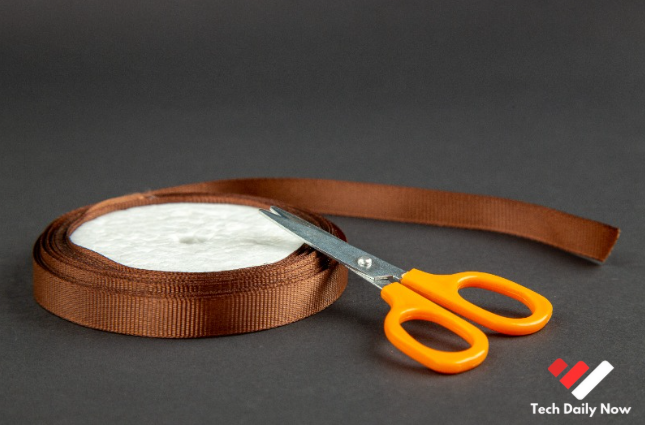The expression Zuschneidfelle may not ring a bell to many, but in certain professions such as leatherworking, tailoring, and even crafts, it has considerable meaning. Zuschneidfelle refers to hides or skins which are to be cropped and further processed to be made into garments, accessories, upholstery, or decorative item. This is not just a haphazard collection of leather. Each piece is meticulously chosen, calibrated, and processed to meet the requirements of the output.
In this guide, craft professionals and buyers will be equipped with the definition, history, usage, advantages, and care tips, along with market trends to make educated decisions regarding Zuschneidfelle.
What are Zuschneidfelle?
Most commonly made of sheep, goat, cow or deer, Zuschneidfelle are animal hides that are sliced and shaped meticulously for a given task. Preliminary processes such as tanning, dyeing and trimming are done to fit the quality, size and standard of the project for consideration.
Regions with a rich history of leather craftsmanship often speak German, making Zuschneidfelle a term that is culturally insightful. It is derived from two German words “zuschneiden” meaning to cut and “Felle” which refers to skins or hides.
The History of Zuschneidfelle
The use of leather can be traced back to thousands of years ago for protective gear, clothing, and shelter. In Europe, the skill of crafting and preparing the hides progressed with the skill of cutting and crafting leather. Zuschneidfelle (Usable leather for cobblers, tailors, and artisans) started to be produced as workshops sprang up. Tailors, cobblers and other artisans began to receive prepared materials to ease their work.
Bespoke and high-end tailored items still require traditional hand-cut work, but in the modern era tailors have started to mechanise Zuschneidfelle production.
Key features of Zuschneidfelle
Most important features when buying Zuschneidfelle leather are:
- Type of material leather. Sheep, goat, cow and other known hides and even exotic ones could be purchased.
- Methods of tanning like chrome for leather durability and balance of eco-friendly methods like vegetable tanning.
- Its thickness, Product dependent, measured in mm and ounces.
- Surface. Smooth, suede, nubuck or even embossed textures.
Its color versus quality ratio. Dyeing leather should be done uniformly to have a good visual appeal and integrety.
Sectors of Zuschneidfelle application
Zuschneidfelle leather has versatile application accross the following sectors:
Fashion and clothing: Coats, jackets, skirts and vests.
Footwear: Boots, leather sandals and shoses.
Upholstery: Leather furniture coverings and auto interior works.
Accessories: Handbags, wallet, belt and gloves.
Craft works: Custom leather works, costume and home décor items.
Manufacturers and hobbyists are the same, both types of users benefit from time-savings with Zuschneidfelle.
Advantages of Zuschneidfelle
Time savings – Less time on preparation.
Pre-cut hides – These hides are easier as they are selected and processed professionally.
Less waste – More efficient material usage as compared to raw hides.
Flexibility – These Zuschneidfelle are tailored to meet both small and large projects.
Diverse and appealing – They are offered in many colors, textures, and finishes.
How to Pick the Most Suitable Zuschneidfelle
Take the following into account:
Complies with the requirements of the project – Consider the thickness and the finishing of the Zuschneidfelle.
Longevity: Pick hides that are tougher for footwear and upholstery.
Design Elements: Assess color and texture in the context of the overall design.
Responsible sourcing: Choose these suppliers who are compliant with humane and environmentally sustainable practices.
Zuschneidfelle Care and Maintenance
To extend the life of products made from Zuschneidfelle, avoid the following:
Excess Moisture: This can cause leather to warp, stiffen, or lose shape.
Forgetting to moisturize: Leather will no longer be supple if it is not softened with conditioners.
Ambient light: This can lead to fading for anything that is exposed for longer periods.
Restricted breathing: Keeping the Zuschneidfelle in these breathable bags will maintain their structure for longer.
Market Trends for Zuschneidfelle in 2025
The Zuschneidfelle market is flourishing in 2025, driven by an artisanal and sustainable product shift. Luxury brands continue to invest in vegetable-tanned hides, while e-commerce is broadening access to premium Zuschneidfelle for small craft businesses.
Conclusion
Zuschneidfelle transcends mere leather pieces; they integrate modularity, craftsmanship, and tradition. Zuschneidfelle hides are versatile and enduring, serving high-fashion, home decor, and personal projects. With thoughtful selection and maintenance, they can be treasurable assets in the hands of professionals and amateurs alike.
Zuschneidfelle – Faqs
Q1: What animals are most commonly used for Zuschneidfelle?
A: The most commonly used are sheep, goat, cow, and deer hides for their strength and ease of processing.
Q2. Are Zuschneidfelle always tanned before sale?
A: Most undergo tanning as it enhances the hides’ strength and prevents decay.
Q3. Can beginners work with Zuschneidfelle?
A: Yes. The pre-cut design is user-friendly for novices in leather crafting.
Q4. Are there eco-friendly options for Zuschneidfelle?
A: Compared to chrome-tanned options, vegetable-tanned hides are more eco-friendly and sustainable.
Q5: Where can I purchase quality Zuschneidfelle?
A: Through suppliers of leather, craft shops, and specialized online markets, they can be accessed.



